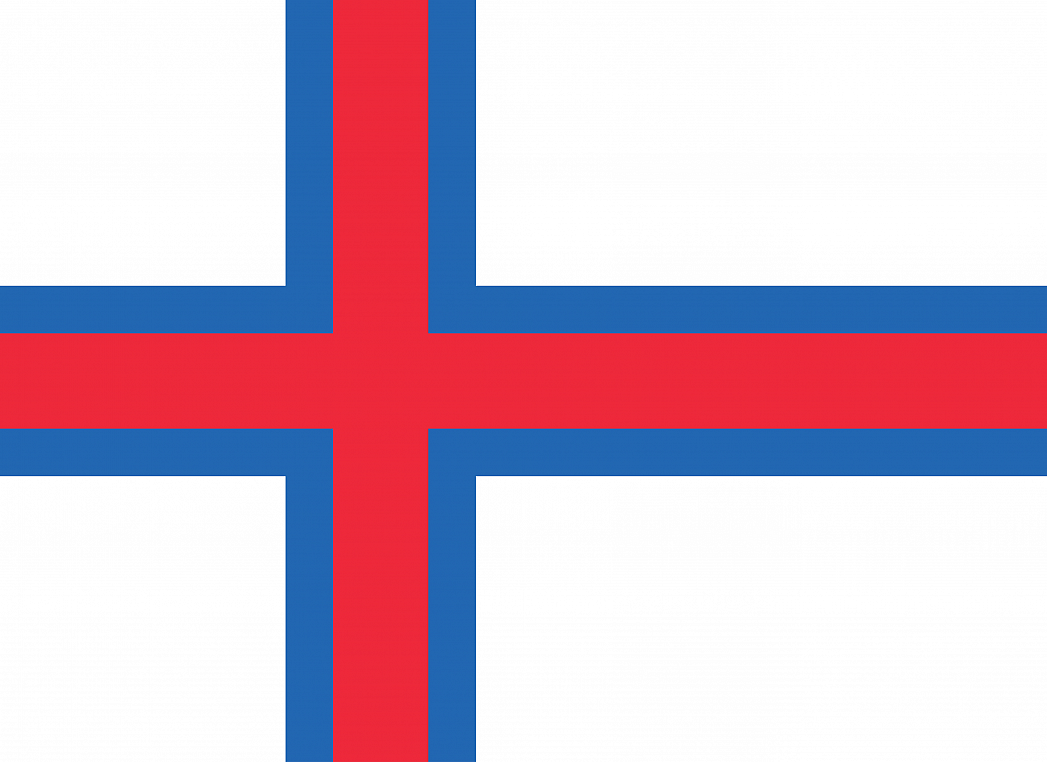The Faroe Islands are an archipelago forming part of the Kingdom of Denmark. They have a national flag known locally as the Merkio, meaning the banner or mark. The design of the flag is characteristic of the Nordic flags that share the same heritage. These flags always have a cross with the center of the cross shifted toward the hoist. The Faroese flag has a cross that is oriented towards the left side - the cross is red with azure blue margins that are set on a white background. On April 25, 1940, the British occupation government approved the use of the flag on Faroe vessels as they did not want the same flag as the German-occupied Denmark to be used. Later after the war, with coming in effect of the Home Rule Act of 1948, the Danish authorities recognized Merkio as national flag on land and sea. April 25, is celebrated as the National Flag Day.
The flag resembles the flags of Iceland and Norway. The white color symbolizes Christianity and the creators of the flag, while the white color also represents the sky and the sea. The red and blue colors are found in the traditional Faroese headdress and are in unison with the traditions of the other Nordic and Scandinavian flags.
The Faroese flag was designed in 1919 by two students, Oliver Lisberg and Emil Joensen, who were students in Denmark at the time. It is believed that the students were inspired by the new recognition of Iceland’s independence and the wide recognition of the Icelandic Flag. When the duo presented the flag to the influential Faroese Student Union in 1919, the flag was out rightly approved. On returning home that summer, Oliver Lisberg raised the flag in his church in the village of Famjin on June 22, 1919, during a wedding ceremony. Since 1955 the flag has been preserved in that church in memory.
Unlike many of the island's neighbors, the Faroe Islands do not have outstanding ancient flags that were used as national banners. For centuries the island has been using the official Danish flags popularly referred to as the Dannebrog. Previously, in the ninetieth century, the island of Faroe started using a flag which had an image of an old Faroese coat of arms, the silver ram on blue shield called the "Vedrur." Later on, another flag was adopted, this one had the Islands National Bird called the "Tjaldur" in English standing for Oystercatcher as its symbol, and these two flags were mainly used at social functions and never recognized as National Ensigns.
This page was last modified on May 1st, 2018
More on Graphicmaps

Published on 2019-11-06
What is a Trade Embargo?

Published on 2019-11-04
Which Two Countries Used to Have the Same Flag?

Published on 2019-09-16
What Is the Only Two-Sided State Flag?

Published on 2019-09-16
Which Country Flag Looks Like the Texas Flag?

Published on 2019-08-29
Flags That Resemble the US Flag

Published on 2019-08-20
